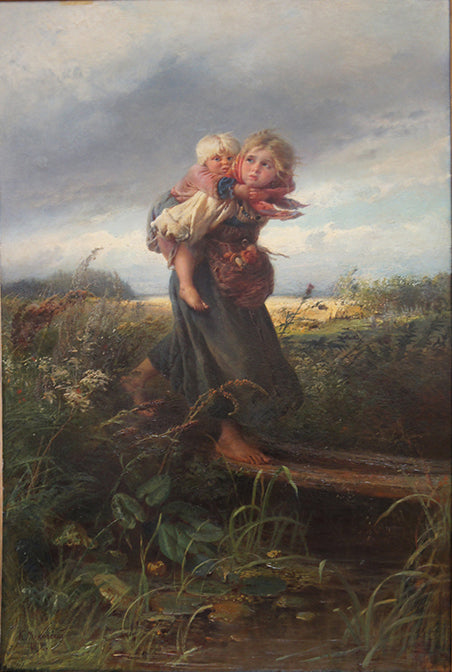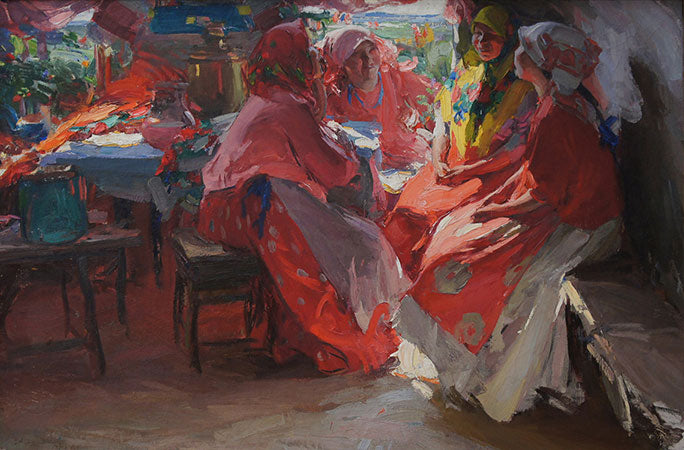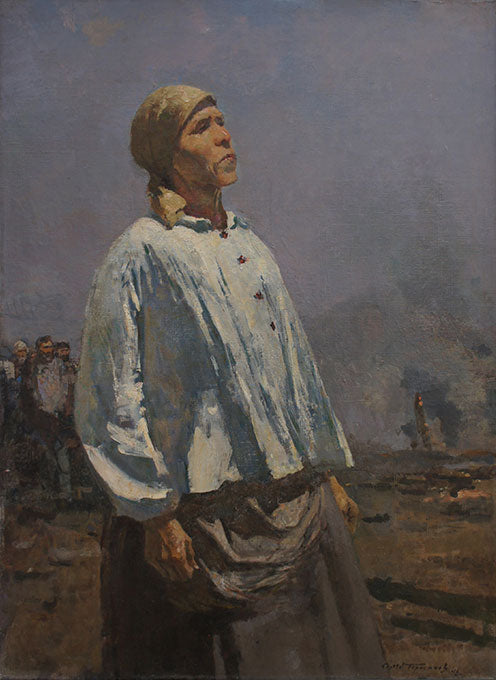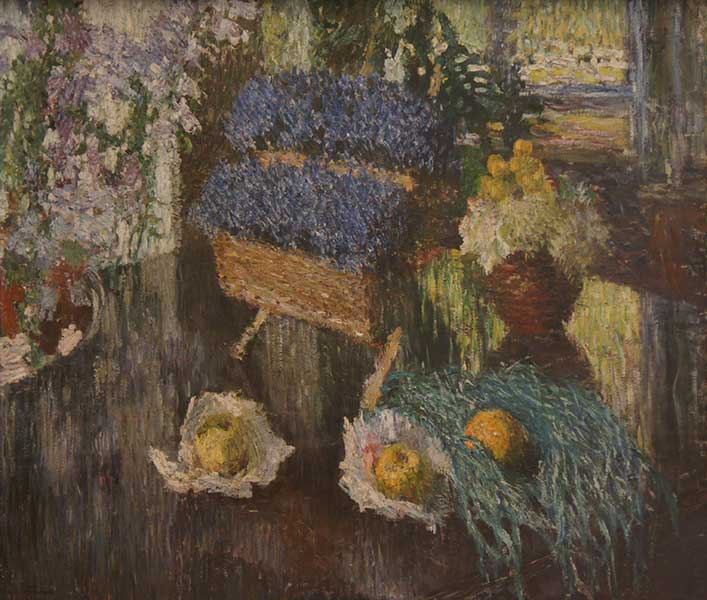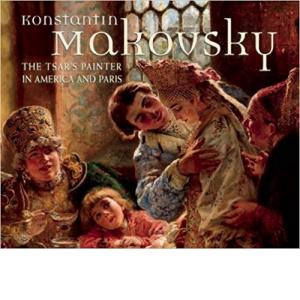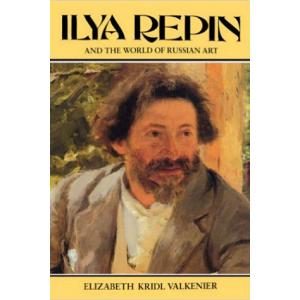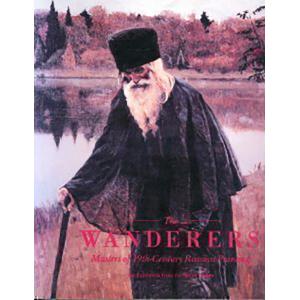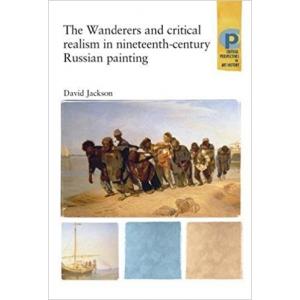The Wanderers: A New Social Artistry
by Cathy Locke
The Age of Enlightenment gave birth to new ways of thinking concerning justice, liberty and tolerance during the 1700s. Catherine the Great (1729-96) embraced these new theories and maintained a secret correspondence with Voltaire (1694-1778) up until his death. Catherine recognized that a letter to Voltaire was a message to the intelligentsia of Europe.1 The French Revolution (1789-99) opened the floodgates, creating a period of great reform during the 1800s. A new perspective had manifested in the collective consciousness around the world bringing an end to years of abuses by the church and state. It was a time of great revolution and change throughout the world. Both the slaves in the United States and the serfs in Russia were emancipated in 1863. Two years later a group of thirteen graduating painters and one sculptor, led by Ivan Kramskoy (1837-87), staged an emancipation of their own from the Imperial Academy of Arts in St. Petersburg, giving birth to an artel to be known as the Wanderers (Peredvizhnichestvo in Russian). Also in 1863, by coincidence, a similar protest against the French Academy gave birth to the Impressionists when they formed their first exhibition: the Salon des Refusés.2
The Imperial Academy was founded in 1757, with classes beginning in 1758 in the disciplines of painting, sculpture and architecture. Initially, professors were recruited from Europe with lucrative offers from the state. During these early years the teaching system was copied from French and Italian academies. Training was very strict, giving students little artistic freedom. The academy enforced a neoclassical style and technique, and sent its promising students to European capitals for further study. Not only was training at the Academy required for a successful career, but it also gave many students the legal right to be free from positions of the military and serfdom. All senior projects were dictated by the governing board of the Academy and were refined to mythological, historical and/or biblical themes, primarily from ancient Greece, Italy and the Holy Lands. The first round of accomplished painters to come through the Russian academic system included Karl Bryullov (1799-1852) and Fidelio Bruni (1799-1875). Bryullov developed a style that combined neoclassical simplicity with romanticism. His best-known work, The Last Day of Pompeii (1830–1833), created a sensation and established Bryullov as one of the finest European painters of his day. After completing this work he was awarded a high post at the Imperial Academy. Bruni entered the Academy at the age of ten. Upon graduating in 1818 he went to Italy to continue his education. His first large-scale work, The Death of Camilla (1821), earned him the title of academician at the Academy. For nearly a century the Imperial Academy produced artistic works that were mere adaptations of great European masterpieces. Though Russian writers of this period developed their own voice and style, students of the Imperial Academy did not.

In 1862 an International Exhibition held in London resulted in the Imperial Academy being slammed for producing artists who lacked individuality. Art critics blasted Russian art as “being devoid of any originality,”3 igniting the concerns of many students at the Imperial Academy. The critics argued that Russian art needed to shed its “cosmopolitan garb” and become focused on native themes. After nearly a century of being forced to create themes that had nothing to do with Russia these artists had had enough. The entire group of fourteen students left behind their potential degrees at the Academy and moved into a large common apartment, even sharing their earnings. They discussed what “new” Russian art should be and its responsibility to the Russian people. Despite their positivist spirit they were unprepared to speak out about the issues that engrossed Russian society. They began holding open Thursday night meetings where they would invite friends and the Russian liberal intelligentsia, whose concerns paralleled those of the artists. These meetings helped to focus these artists on the themes and content of their new work. It also created a wide base of community support. The Wanderers gave birth to a new social artistry that depicted the lower classes or dealt with issues of social injustices. Their leader, Ivan Kramskoy, felt that their work should be “wise and educational, as well as beautiful.”
The late 1860s proved to be an incubation period for the next two decades of new Russian Realism. By 1870 the Wanderers movement had spread to Moscow, where the artists formed the Association of Traveling Art Exhibitions. The Association launched a program of free traveling exhibitions throughout Russia that were open to the public. Up until this time all art exhibitions in Russia were conducted primarily by the Imperial Academy and viewed by a limited few. The first Traveling Art Exhibition was held in 1871 and was hailed by the liberals as the first step of freedom for the creative artist. The Wanderers developed a new language and gave voice to Russian art for the first time in the country’s history. Their art responded to the people’s search for solutions to their country’s problems. Many of these early paintings were satires of Russian life or political statements about the ruling class. Such a painting was Nikolai Ge’s (1831-91) Peter the Great, the Tsar-Reformer (1872), which depicts Peter questioning his rebellious son Alexis. Liberals singled out this painting as a reminder to the Russian society to stay committed to the reforms of the 1860s or you too will die like Alexis. Though the original fourteen Wanderers started modestly, by the mid-1870s the group was highly regarded among the Russian people and sales were very lucrative. In fact, for most Russians to this day, the art of the Wanderers stands for national art.
A new respect for the common people of Russia was reflected in the Wanderers' work. Ivan Kramskoy’s Forest Warden (1874) depicted an intelligent, strong, spirited peasant. This was a far cry from previous representations of peasantry. Vladimir Stasov (1824-1906), the most influential Russian art critic of his day, took a great interest in these artists, especially Ilya Repin (1844-1930). Throughout Repin’s life, Stasov had a heavy hand in advising and directing his work. Stasov wanted Russian art to be “national” and to be identifiable as purely Russian through content and style. Repin’s first great masterpiece, Barge Haulers on the Volga (1870-73), depicts a group comprised mostly of older men all looking at the ground or straight ahead. The only one among them, a young boy, is looking off at the distant shore. Repin is making a comment about these men and their lives: For the old men there was no future - the future of Russia belonged to its youth. In March of 1873 the canvas was chosen by the Imperial Academy as an official representation of Russian realist painting for the Vienna International Exhibition. This painting marked a full 360-degree change in the subject matter approved by the Imperial Academy and was a monumental shift in the school of Russian realism. Repin painted the barge haulers exactly as they appeared, without enhancing their appearance or romanticizing them in any way. This lack of romanticism, painting Russia just as she appeared, grew out of the theories of people like Stasov and the Wanderers.
Sources
- Robert K. Massie, Catherine the Great – Portrait of a Woman, Random House, 2011, page 335
- Elizabeth Kridl Valkenier, The Wanderers Masters of 19th- Century Russian Painting, Dallas Museum of Art, 1990, page 3.
- Elizabeth Kridl Valkenier, The Wanderers Masters of 19th- Century Russian Painting, Dallas Museum of Art, 1990, page 2.
About the Author
Cathy Locke is an award-winning fine art painter, professor, published writer and lecturer. She is the editor-in-chief of Musings-on-art.org and specializes in Russian and European art.
Cathy Locke’s artwork – www.cathylocke.com


